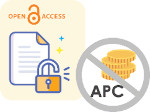Prevalence and frequency of drug use by university health courses of a public institution in the country
DOI:
https://doi.org/10.61661/congresso.cbmev.7.2024.156Keywords:
Lifestyle, health, toxic substancesAbstract
The control of toxic substances is one of two pillars of Lifestyle Medicine. Drug use can begin in adolescence and youth, or even before, and become a vice, with the risk of spreading throughout life. Thus, the objective of this study is to identify the prevalence of drug use by 1st grade academics. year of courses in the health area of a public university in the South of the country. This study was approved by the Human Research Ethics Committee, under the C.A.A.E. 75873123.80000.0104 and apparently no. 6,625,840. 92 students will participate in two courses of Medicine (n=15), Dentistry (n=7), Nursing (n=26), Psychology (n=1), Biomedicine (n=14), Physical Education (n=15) and Pharmacy. (n=14), who will respond to an online questionnaire about the type of drugs, frequently and when they were started or used. It was verified that the most used toxicants were: alcohol (96.7% of the students) and electronic cigarettes (61%). Only 3.3% claim to have never used any drug. Most students (65%) started or used alcohol, cigarettes, and electronic cigarettes not by teaching them anything, and 21% said they started at university. Verified at a frequency of 6.5% daily use, 27.2% weekly and 43.5% monthly. In relation to the use of cocaine, crack, ecstasy, perfume and cocaine, it is verified that 39.2% do not use it, being that 6.5% use it daily, 27.2% weekly and 43.5%. , monthly. When asked about the start of use, 17.4% responded that they started not in the middle and 20.7%, during the faculty. It is concluded that the prevalence and frequency of drug use among university students gives high health, or that it demonstrates a serious lifestyle problem among academics, capable of prejudicing university training, their own health and the population served. Thus, it is necessary to develop strategies for education, prevention and assistance to academics in relation to the use of toxic substances, which are not prejudiciais for a healthy life.
References
BENOWITZ, N. L.; LIAKONI, E. Tobacco use disorder and cardiovascular health. Addiction, v. 117, n. 4, p. 1128-1138, abr. 2022. https://doi.org/10.1111/add.15703 DOI: https://doi.org/10.1111/add.15703
ELTORAI, A. E.; CHOI, A. R.; ELTORAI, A. S. Impact of Electronic Cigarettes on Various Organ Systems. Respiratory Care, v. 64, n. 3, p. 328–336, mar. 2019. DOI: https://doi.org/10.4187/respcare.06300
GRILLO, R.; KHEMISS, M.; DA SILVA, Y. S. Cytotoxic and Genotoxic Effects of Waterpipe on Oral Health Status: Systematic review and meta-analysis. Sultan Qaboos University Medical Journal, v. 23, n. 1, p. 5–12, 23 fev. 2023. DOI: https://doi.org/10.18295/squmj.6.2022.043
LIMA MENEZES, I. et al. Cigarro Eletrônico: Mocinho ou Vilão? Revista Estomatológica Herediana, v. 31, n. 1, p. 28–36, 6 abr. 2021. DOI: https://doi.org/10.20453/reh.v31i1.3923
LIMA, S. O. et al. Prevalência da Depressão nos Acadêmicos da Área de Saúde.
Psicologia: Ciência e Profissão, v. 39, p. e187530, 2019.
OLIVEIRA, A. T. et al. EVALI em adolescentes: alterações resultantes da utilização de
cigarros eletrônicos nessa faixa etária. Research, Society and Development, v. 11, n. 13, p. e127111335250, 30 set. 2022. DOI: https://doi.org/10.33448/rsd-v11i13.35250
PIRES, I. T. M. et al. Uso de Álcool e outras Substâncias Psicoativas por Estudantes
Universitários de Psicologia. Psicologia: Ciência e Profissão, v. 40, p. e191670, 2020.
SOUSA, S. L. D. et al. Conhecimento e uso do cigarro eletrônico por acadêmicos de
medicina. Revista Eletrônica Acervo Científico, v. 44, p. e12865, 2023. DOI: https://doi.org/10.25248/reac.e12865.2023
WINNICKA, L.; SHENOY, M. A. EVALI and the Pulmonary Toxicity of Electronic Cigarettes: A Review. Journal of General Internal Medicine, v. 35, n. 7, p. 2130–2135, jul. 2020. DOI: https://doi.org/10.1007/s11606-020-05813-2

Downloads
Published
How to Cite
Issue
Section
License
Copyright (c) 2024 Maria Júlia Costa Rocha

This work is licensed under a Creative Commons Attribution 4.0 International License.
The VI Brazilian Congress of Lifestyle Medicine allows the author(s) to maintain their copyright without restrictions. Publications are licensed under the Creative Commons Attribution 4.0 International License - CC-BY


